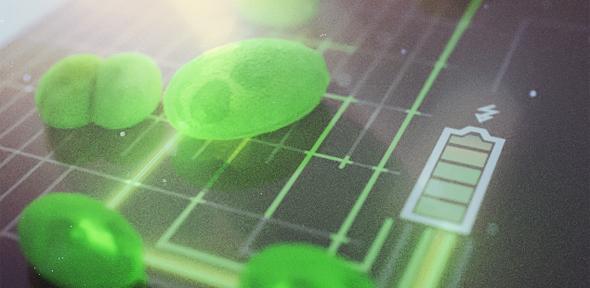
A new design of algae-powered fuel cells that is five times more efficient than existing plant and algal models, as well as being potentially more cost-effective to produce and practical to use, has been developed by researchers at the University of Cambridge.
In recent years, in addition to synthetic photovoltaic devices, biophotovoltaics (BPVs, also known as biological solar-cells) have emerged as an environmentally-friendly and low-cost approach to harvesting solar energy and converting it into electrical current. These solar cells utilise the photosynthetic properties of microorganisms such as algae to convert light into electric current that can be used to provide electricity. In a new technique described in the journal Nature Energy, researchers from the departments of Biochemistry, Chemistry and Physics have collaborated to develop a two-chamber BPV system where the two core processes involved in the operation of a solar cell – generation of electrons and their conversion to power – are separated.
"While conventional silicon-based solar cells are more efficient than algae-powered cells in the fraction of the sun’s energy they turn to electrical energy, there are attractive possibilities with other types of materials," says Professor Christopher Howe from the Department of Biochemistry. “In particular, because algae grow and divide naturally, systems based on them may require less energy investment and can be produced in a decentralised fashion."
Separating the energy generation and storage components has other advantages, too, say the researchers. The charge can be stored, rather than having to be used immediately – meaning that the charge could be generated during daylight and then used at night-time.
Click here for the full article.
Click here for the Nature Energy publication.
Image credit: Kadi Liis Saar

